
A small island south of the mainland, Tasmania is an often forgotten hidden gem of Australia. Many come here for a whistle-stop tour, however, if you are able to take the time to visit for longer than a few days, you will not be disappointed. With beautiful beaches, vast areas of bush-land, mountains and world heritage wilderness, the landscape in Tasmania gives you a bit of everything. This is accompanied by excellent food, local wines, great people and so much to do that one trip just won't be enough.
Located on the North West coast of Tasmania, this place is certainly well named. With nothing except sea between Tasmania and Argentina, half a world away, the often ominous weather, mighty waves, and barren landscape make you truly feel like you are standing at the edge of the world. This is well worth a road trip, with landscape that is completely distinct when compared with much of the rest of Tasmania. If you want to take the scenic route back, drive on the Western Explorer Highway via Corinna and get the tiny two-car ferry over the river. You’ll drive all day and only come across a handful of other cars.
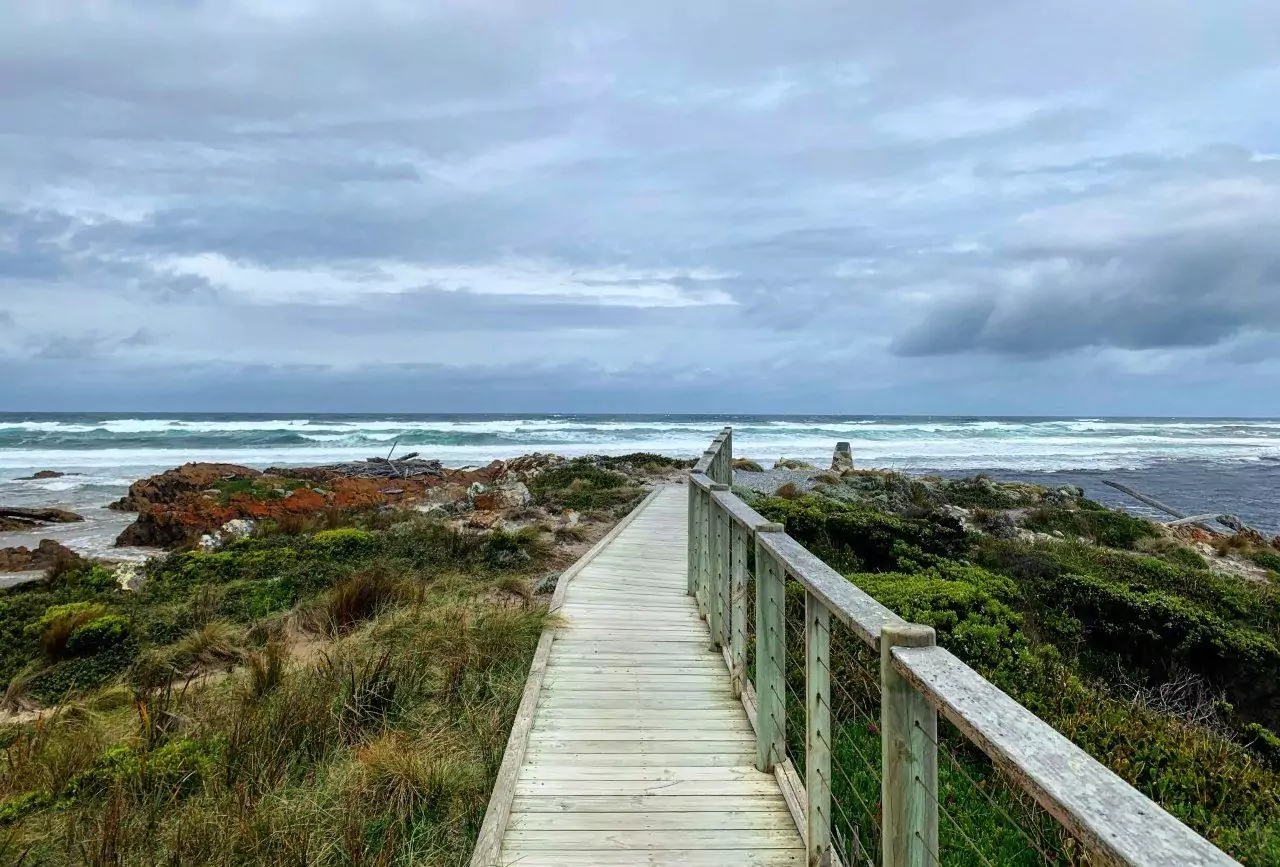
The Edge of the World, Arthur River
photography by: Charlotte Webster
There is probably no better place in Tasmania to learn about the history of the convicts that were brought to the island in the early 19th century. Located on the Tasman Peninsula, Port Arthur was a convict station from 1833 to 1853, where the most hardened criminals were sent. With only a 30 meter wide strip of land, called Eagle hawk Neck, connecting the peninsula to the rest of Tasmania, its location made it virtually impossible to escape from, although many tried. Eagle-hawk Neck was guarded by soldiers and savage dogs, while it was also rumored that the surrounding waters were shark infested. Significant preservation work has gone into the buildings at Port Arthur which enables you to get a real feel of how it once looked. Entrance to the historic site includes a short walking tour where you are given an introduction to the history of Port Arthur, and a 25 minute cruise around the harbor. The cruise passes the Isle of the Dead; a tiny island which during the time of the convict station, was used as a cemetery for both the convicts and free people that lived at Port Arthur, with current estimations put the number of graves there at around one thousand. The site also has interactive exhibits and displays that give you an insight of the day to day life of the people who once lived there, from the convicts to the governors and their families.
Entrance into Port Arthur Historic Site costs $40 and your ticket allows you entry for two consecutive days. There is a lot of information to take in, so it’s well worth taking the time to visit over two days, albeit it’s also possible to fit everything into a single day.
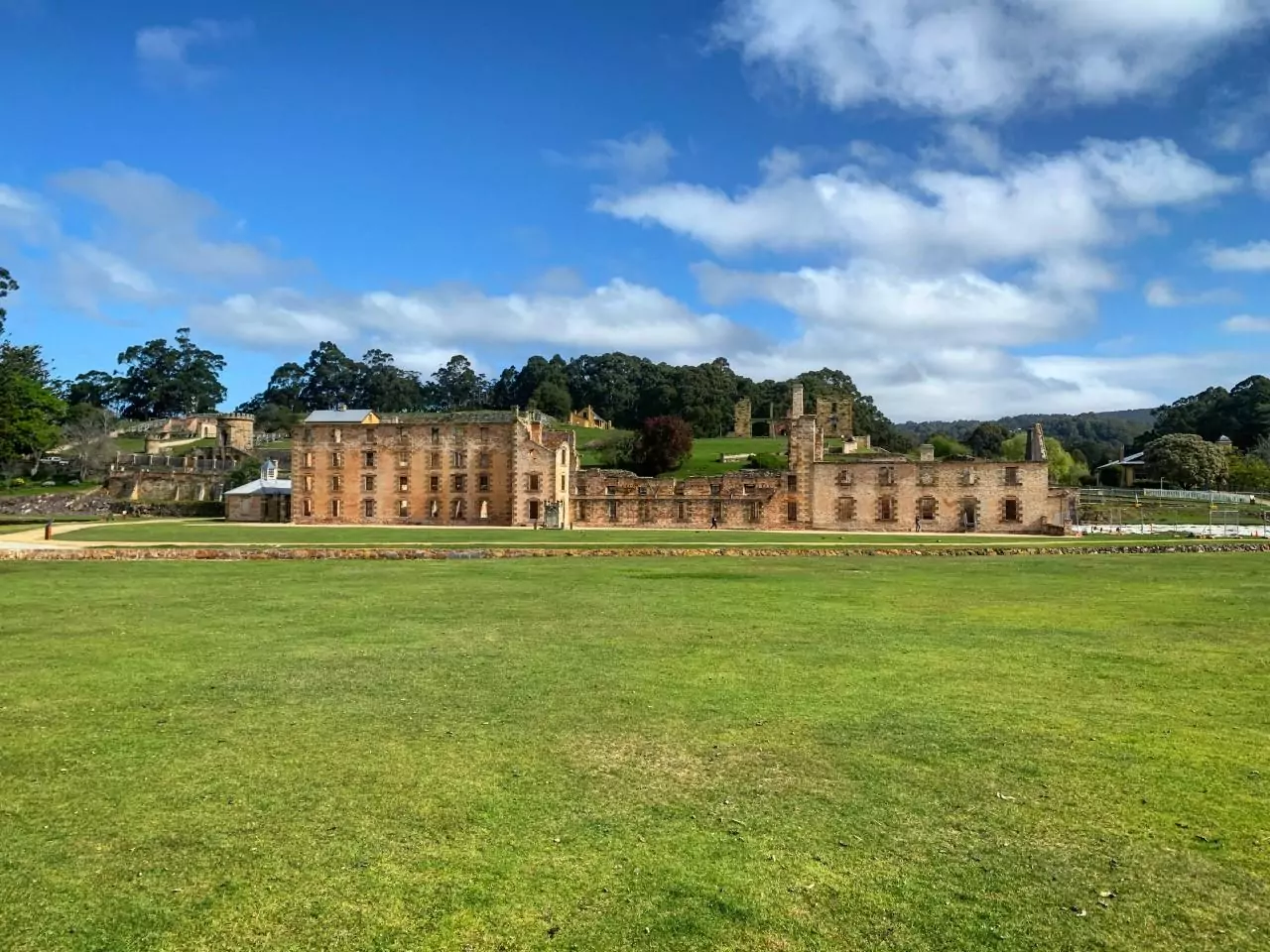
The Penitentiary, Port Arthur Historic Site
photography by: Charlotte Webster
Another ex-convict station, Sarah Island is Tasmania’s oldest convict settlement, and was reputedly the most brutal. Operating between 1822 and 1833, it housed mostly male convicts who had reoffended whilst serving their original sentence. Life for the convicts here was extremely harsh, with high levels of punishment including floggings and solitary confinement. In its later years, the convicts on Sarah Island built ships and for a short period of time, this small eight-hectare (twenty-acre) island was the largest shipyard across the Australian colonies.
To access the island you must either take a cruise from Strahan or a chartered yacht. Gordon River Cruises are one of the companies that offer day and evening cruises up from Gordon River to Sarah Island. While this is by no means an “off the beaten track” activity, the cruise is a great experience, with fantastic views of the World Heritage listed wilderness. Not only do you go on a guided tour around Sarah Island, but also through Hells Gates, the narrow passage where Macquarie Harbor meets the Southern Ocean, and a short walking tour around Heritage Landing. If you’re lucky enough to go on a perfect weather day, you will also be able to see the “reflections”; a perfect mirror image of the trees in the water.
A day trip to Sarah Island is best finished off by going to see Australia’s longest running play; The Ship that Never Was. This is a hilarious two man show with lots of audience participation (although don’t let this put you off). The play tells the story of the last boat to be built on Sarah Island… or was it?

The magnificent reflections on the way to Sarah Island
photography by: Charlotte Webster
Penguins probably don’t immediately spring to mind when thinking about Tasmanian wildlife, however, it is estimated that between 110,000 to 190,000 penguins call Tasmania home. The Little Penguin, also known as the Fairy Penguin or Blue Penguin, is the smallest species of penguin, and can be spotted in numerous places across Tasmania. The best and safest way to see the penguins is with a guide at the dedicated penguin viewing platforms. These can be found in Low Head, Bicheno, Penguin (yes, there’s even a town named after them), Lillico Beach, Bruny Island, and Burnie. You can go on a paid tour, or even see them for free at Lillico Beach and at the Little Penguin Observation Center in Burnie, where volunteers are present every night.
Among the top tips for penguins spotting: arrive just after sunset, stick to the designated observation points, keep quiet, do not position yourself between the sea and the penguin’s burrows, only use a red light or torch, no flash photography, and keep dogs away.
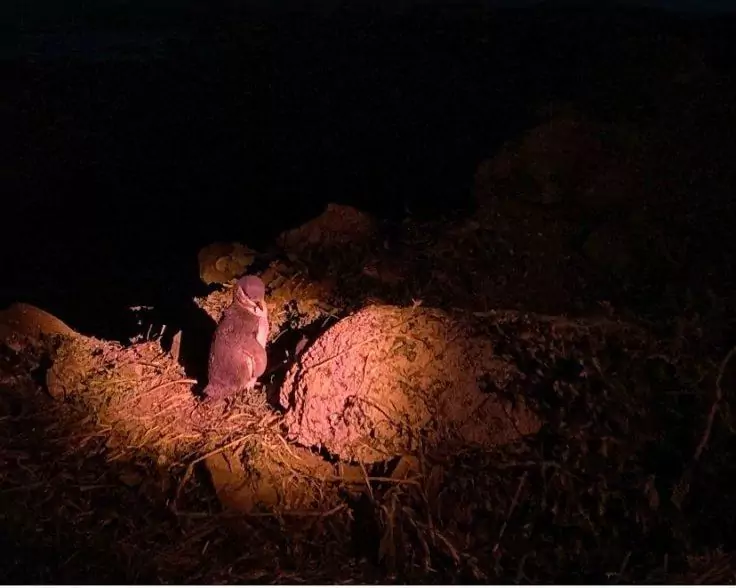
A little penguin in Burnie
photography by: Charlotte Webster
The Channel Museum houses a huge collection of artefacts and items relating to the D’Entrecasteaux Channel region of Southern Tasmania. Mainly focusing on the day to day life of the people who have lived in the Channel area, displays include the local timber industry, the boat building and fishing industry, the fruit growing industry and the Electrona Carbide works. There are also exhibits around how the people of the Channel area were affected by the two World Wars, and the 1967 bush fires. It is extremely easy to lose a few hours in this TARDIS of a museum, especially if you get chatting to one of the friendly volunteers working there. Entrance costs $5 per person, while under 16’s go free.
Covering 1.4 million hectares, ten national parks and reserves, and more than 20% of Tasmania, the Tasmanian Wilderness World Heritage Area is one of the largest conservation areas in Australia. This huge area of land was declared a UNESCO World Heritage site in 1982. Much of the area is not accessible via road, however there are still many ways to visit. Explore the mountain tops at Hartz Mountain National Park, venture deep underground in the caves at Mole Creek Karst National Park, or take a cruise along the river at Franklin-Gordon Wild Rivers National Park. There are numerous hiking options across all of the national parks, from short 20 minute walks, to half, full, and multiple day walks. Those feeling extra adventurous can walk The Overland Track; a six day, 65km trek through the wilderness, which starts at Cradle Mountain and ends at Lake St Clair.

Walking alongside wombats at Cradle Mountain National Park
photography by: Charlotte Webster
Tasmania is a waterfall enthusiast’s heaven. There are countless waterfalls scattered across the island, one of which is Pelverata Falls. Accessible either by a 4-wheel drive track or a 2.5-3 hour (6km) return hike, both routes should be considered as medium difficulty. The last section of the walk is quite rocky and good shoes are recommended. The 4WD track can be difficult after long periods of heavy rain and should not be attempted by those unfamiliar with driving off road. Both routes offer equally spectacular, but very different views – a brilliant panoramic from the top of the falls can be seen from the 4WD track, while from the walking track you can look up to the top of the more than 100m high waterfall.
Other great waterfalls across the island include Dip Falls, Russell Falls, Montezuma Falls, and Harding’s Falls.
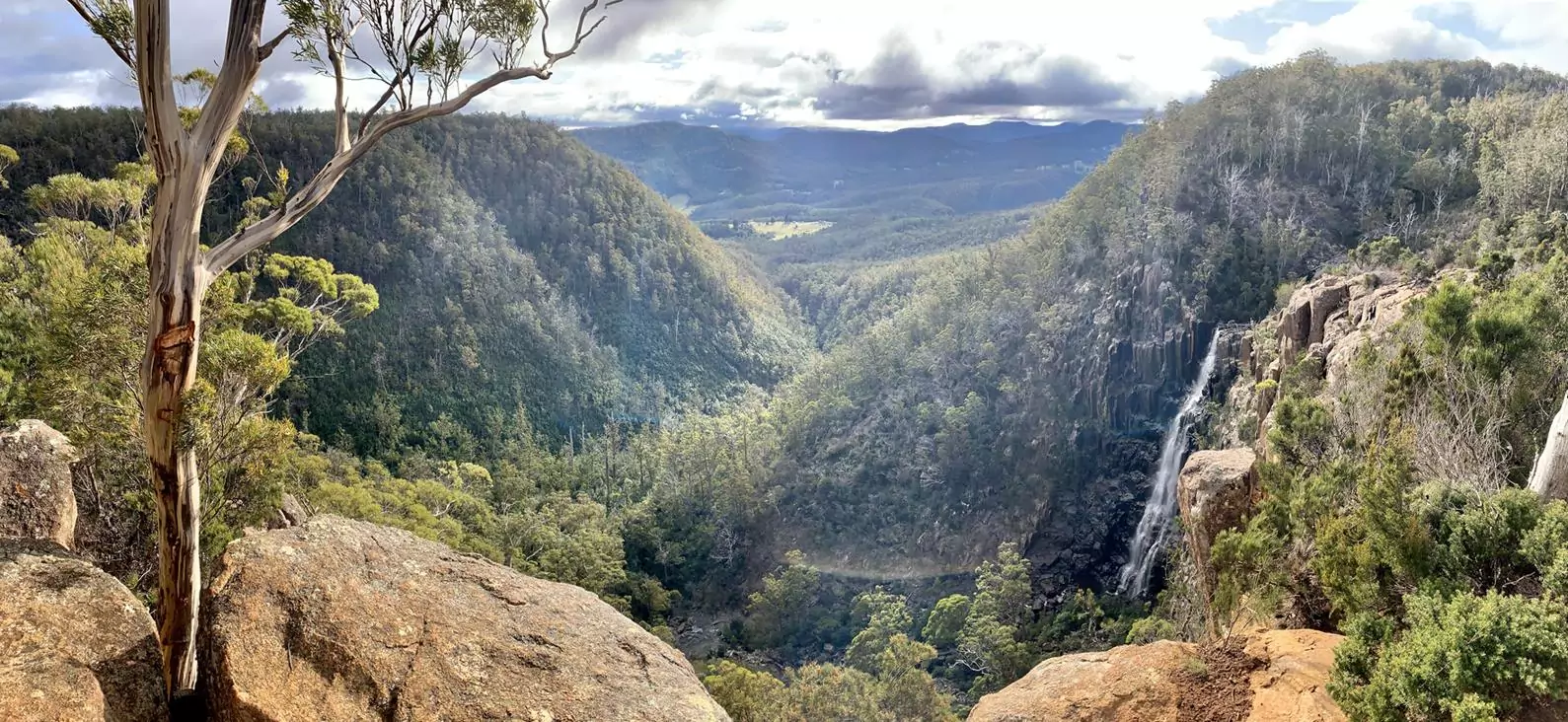
The view looking down onto Pelverata Falls from the end of the 4WD track
photography by: Charlotte Webster
A small town made up of nothing more than a handful of holiday shacks, Cockle Creek is a great place to go off the grid for a few days. There are no shops or services, as the nearest are in Southport, roughly 29km away, so make sure you bring everything you need for your stay. Free camping areas line either side of the quiet road, with no facilities other than a water tap and toilets. If camping is not your thing there are also several holiday shacks available to rent during your stay.
Not only are the beaches and the walks here painfully beautiful, but it’s also the southernmost place you can drive to in Australia. Walk the South Cape Bay and you’ll go even further south to the “southernmost point of Australia”, which slightly disappointingly is not actually the most southern point, but as far south as is accessible. This is a beautiful 15.5km return walk that takes around 4-5 hours. Take a packed lunch and enjoy a picnic looking out to sea where only (a lot of) water stands between you and Antarctica.
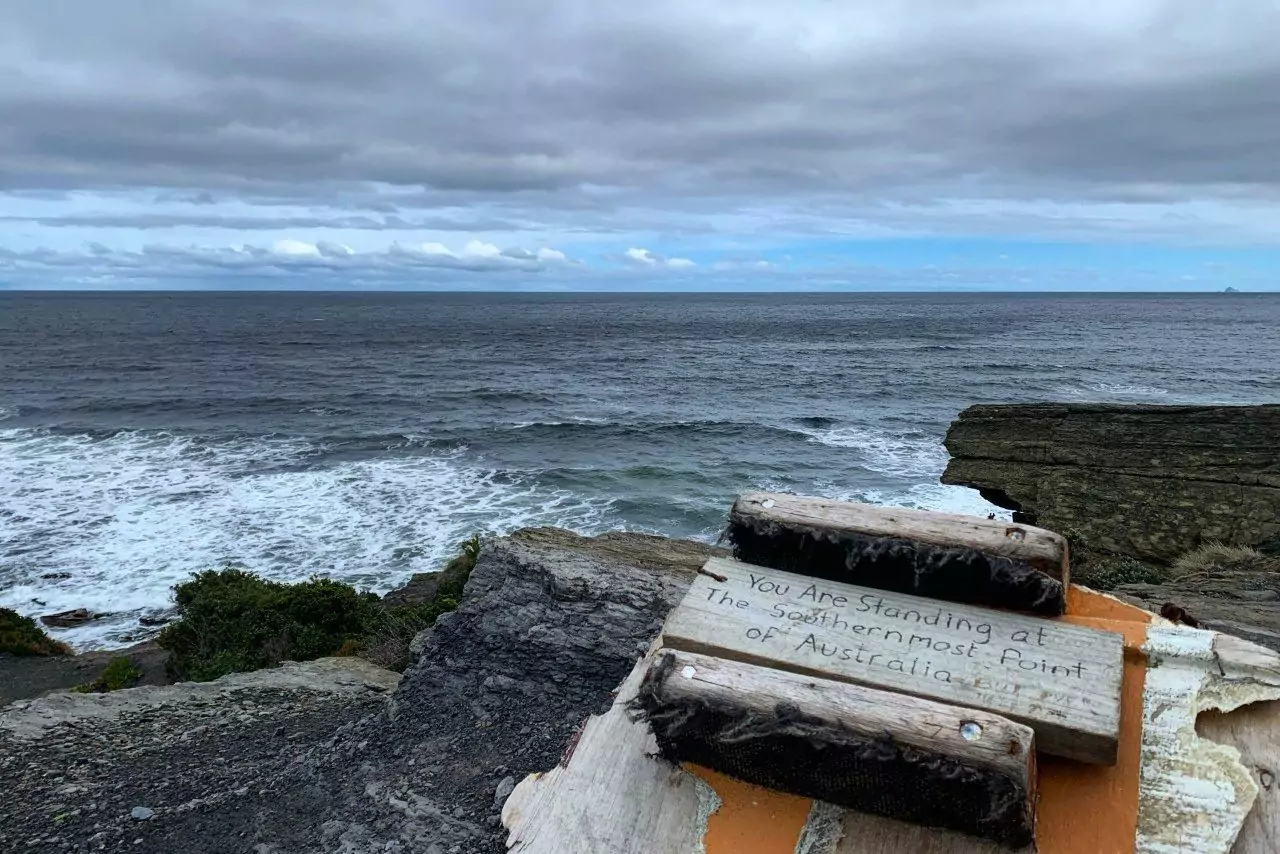
The southernmost point of Australia, South Cape Bay
photography by: Charlotte Webster
When I was a child, my Mum thought it was important that I experience different places and cultures through travel, and as I have grown up, that philosophy has always stayed with me. In March 2019 my boyfriend and I left our full-time jobs to drive from the UK to Singapore and then onto Australia. We documented the highs and lows of our journey in a blog called Starry Nights and Insect Bites. After 20 months, 24,000 miles and 21 countries, our trip came to an end, but our travelling days are by no means over. I love to travel and aim to always have the next trip planned before ending a current one.
Charlotte’s Instagram.
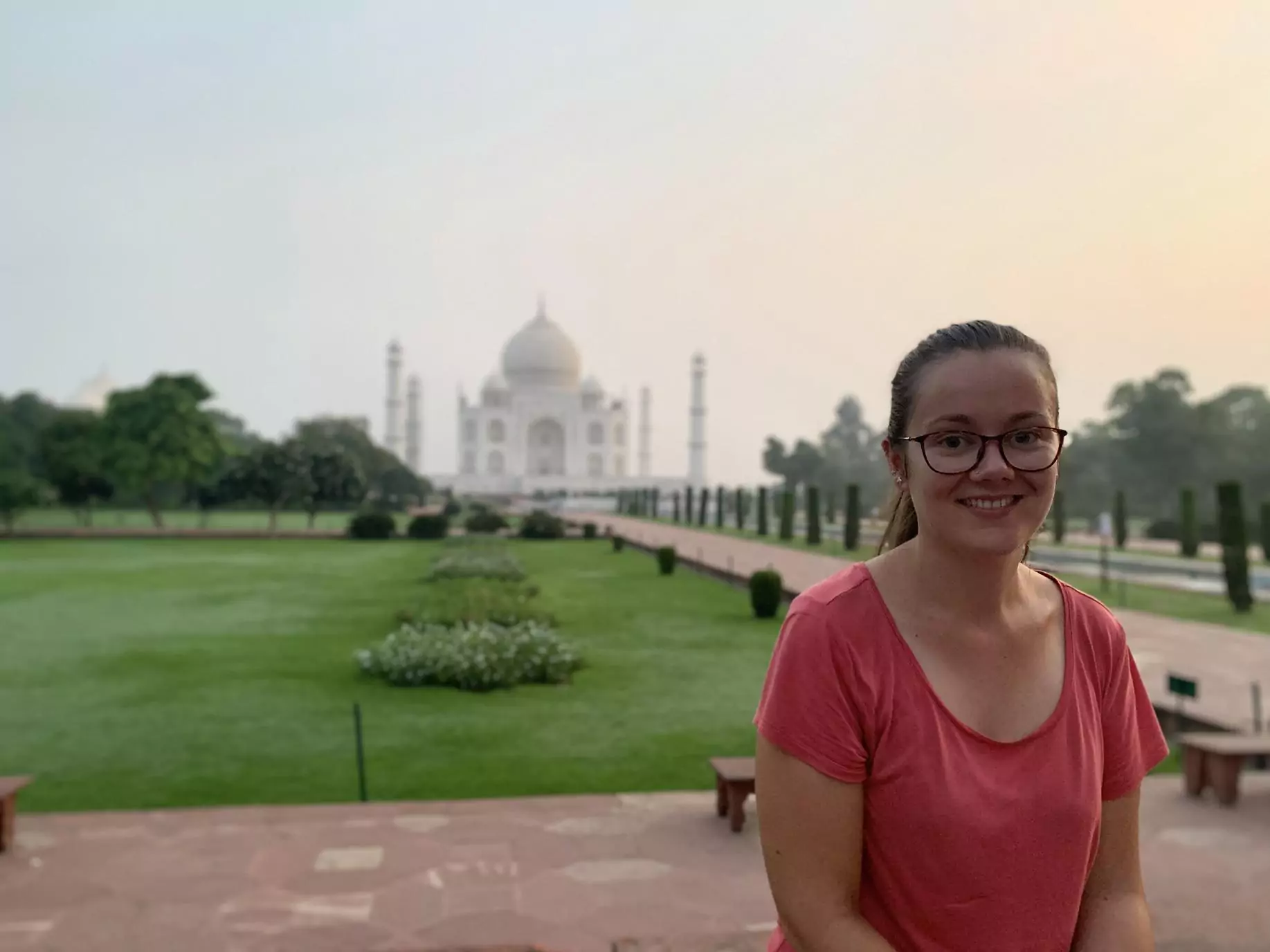
photography by: Charlotte Webster